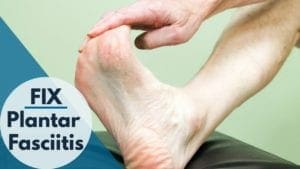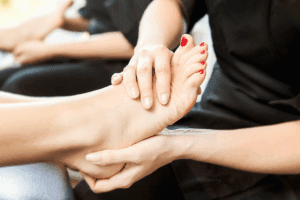
Any runner will tell you—out of all the possible injuries and pain that they’ve suffered from throughout the years, plantar fasciitis is one of the worst. From the sole of the foot all the way through the heel and up the back, this common injury has sidelined runners for months—and maybe even years. There are many do’s and don’ts when you have plantar fasciitis.
Also known as Plantar Heel Pain (PHP), this pain can be felt anywhere from inside of the heel all the way to the sole of the foot.

Quick Causes of Plantar Fasciitis
Often seen commonly with runners, this injury is seemingly caused by the degeneration of the tissue—normally from overloading or overuse. This is not limited to just runners, however, and can also be seen in people who excessively stand throughout their day, are significantly overweight, or have troubles with reaching full dorsiflexion.
After being diagnosed with the condition from a reliable podiatrist, they will most likely offer certain types of treatment or self-medicating options. Most of this medical advice, however, will most likely revolve around waiting it out as it seems to be that the tissue needs to regenerate on its own and the inflammation needs to go down. Unfortunately, as we mentioned earlier, this can take from days to weeks to months. There are many do’s and don’ts when you have plantar fasciitis.
Although you should definitely listen to your doctor or a medical professional‘s advice first and foremost, here are a few do‘s and don’ts when dealing with Plantar Fasciitis.
DO NOT:
You already have pain and don‘t want to aggravate it anymore. To help you get through this period as quickly and painlessly as possible, here are a few tips of what NOT to do:
- Do not engage in activity that would create an impact on your feet, like running or jumping. Either reduce your physical activity (especially running) or avoid it completely until there has been a decrease in symptoms.
- Do not push through any kind of pain. As your doctor will most likely suggest, pain—in this case—is NOT weakness leaving the body. It’s simply just pain. Being tough can actually cause you even more harm, you might even tear or rupture the plantar fascia completely! This can lead to surgery and months or years of being out of the game.
- Do not walk around barefoot or wear old, flat shoes. You should be prescribed or advised to wear shoes that have specific arch support that can help alleviate the symptoms. The main thing here is that you want to be comfortable—so, look for shoes that have cushioned soles.
- Avoid standing for a long period of time. Especially if you‘re not a runner, this might have been actually the primary cause of why the PHP has come on. If your job calls that you have to stand for long periods of time, perhaps even opt for a doctor‘s note (or just talk to your bosses) about adjusting the type of work you do for the time being (or at least from where you do it).
- Don‘t get discouraged! You may have that feeling that the pain will never leave or you will feel unmotivated to exercise at all!
However, it’s important that you try and stay positive and look for alternative exercises that can help you still stay healthy and fit—at least until your condition gets better. Who knows? You may fall in love with something completely different than running.
DO:
So, now you know what you should be avoiding, it’s time to go over what you actually should be doing to help alleviate the pain and speed up the recovery process (other than seeing your doctor, of course).
Here are some do’s:
- Allow your body time to rest. As we mentioned, especially if you’re a runner or an athlete where a lot of running is involved, you’ll want to take the time for your body to recover.
The good news is that there are so many different exercises and sports to try out to see what you like best. You can still keep in shape completing these alternative exercises or non-weight bearing activities—like biking or swimming.
- RICE. You can do the RICE method (rest, ice, compression, elevation) to reduce swelling—especially if you can‘t get out of standing or walking all day at work. Make sure you’re only icing for one period of 20 minutes at a time.
- Invest in insoles or gel pads. Make sure you get some comfortable shoes! Your doctor can definitely recommend certain brands for you or even have insoles customized to fit your feet and weight-bearing balance.
You can also opt to have your feet taped for short-term pain relief (if you can’t get out of standing or walking). The kinesiology tape works best to support the arch and help relieve pain—your doctor or physical therapist will know how to do it. You can also invest in gel heel pads or insoles that provide cushioning within your shoe itself—this can help you avoid dishing out the extra cash for an entire brand new pair of shoes.

- Stretch! As soon as most of the symptoms have settled down and your feet are a little less irritated with pain, this can help in recovery and prevention. However, you should never force the stretch! This can actually irritate the plantar fascia. Once the symptoms have gone down and your doctor approves, you can also even try wearing a night splint while sleeping to keep your foot stretched.
- Be patient—this isn’t an injury that has a certain time span for recovery. It isn’t an injury that is a clean cut or can be cleared up in a matter of days. This is normally a long-term injury that can sideline you from not only sports but your daily life for months.
This might be hard for athletes who love their sport and want to return to run or play—but take the recovery seriously and don’t do too much, too soon!
We hope this article has helped you with your plantar fasciitis—and as always, we would professionally advise you to see your doctor to get the medical attention you need!

